"A German airman is boarding at a house in England. The landlady tells him about her daughter's death; she was killed in an air raid on her seventeenth birthday. As he hears the story, he remembers that day and that he was dropping bombs on the area. When he sees her portrait, he runs from the house and the landlady's son Rudolph runs after him. He chases him across the clifftops and the German sees a vision of the daughter. He tries to embrace her but stumbles and falls off the cliff. Rudolph also sees his sister, they laugh, embrace and he throws stones at the German who is clinging to a tree root. Rudolph's vision disappears and he runs down to rescue the German but he is already dead" (BFI online).
"Mr Terence L. Greenridge writes to tell me that the film “Afterwards”, for which he and his wife Nora [Pfeil] Greenridge, are jointly responsible, has been taken back for the sake of certain additions, previous for general release to amateur societies. Mr Terence Greenridge is better known in the amateur film movement as the first filmmaker in Oxford University, and as author of the recently published “Degenerate Oxford!” For some time he has been a leading light of the London A.C.A. Mr Terence Greenridge did the secondary jobs of “Afterwards”, such as scenarising, choosing locations, and working out camera angles. This film, which had a particularly successful premiere at the London A.C.A.’s public show, is not merely the London A.C.A.’s most ambitious production for 1930, but is also something rather new in cinematography, whether professional or amateur. It has something of that imaginative audacity for which I have already pleaded, and it is, very largely, the work of a woman."
"Telling Situations - In too many cases a film has to attempt to justify a conventional plot. In this case the plot makes the film. Nora Greenridge, who wrote the story, possesses a natural instinct for a telling situation: even when, as in this case, the theme came to her in a dream. In “Afterwards” there is nothing of the sentimental, conventional world of nine films out of ten, where the hero is never allowed to die unless it is obvious that life has not more to offer him. The good looking hero of “Afterwards” dies at the prime of life, full of vitality, and in “Afterwards” the dramatic conflict is between man’s muddle-headed kindliness and the precise retribution of the supernatural world: so precise that, on occasion, it can become cruelty. The film is not calculated to induce placid happiness in an audience, but rather to challenge them to think about the deeper problems of life. Treatment has been subordinated to theme. There is no stunting in this film. Camera-angles and backgrounds were selected in so far as they might elucidate the episode which was being pictured, and not for intrinsic excellences that they might posses in themselves. The beauty of the English countryside finds expression in “Afterwards”, but Nora Greenridge has utilised it in a purposeful manner, understanding how grim events become twice as grim, if they happen in beautiful surroundings."
“Happy Ever After - Nora Greenridge not only wrote the story and directed its production, but played a part, to quote one of the critics, “with sylph-like grace”. Mrs Greenridge, or Nora Pfeil as she used to be, is an attractive blonde and has played several leading roles in London A.C.A. productions. She has also won many awards in scenario competitions. She became engaged to Terence Greenridge a quarter of the way through the production, and halfway through the production their marriage took place. Now they have a house called “Afterwards”—a happy and true modern version of the age-old fairy-tale ending" (M.A.L.B. 1931, 9).
"One of the films being shown [as part of the All-English Amateur Film Week] has been referred to as the most ambitious production of 1930. Produced by Terence Greenridge, better known as an author, directed by Miss Nora Pfeil, who has since become Mrs Greenridge, “Afterwards” is certainly a film none should miss. Plots should not be given away in advance, so let it be said that a German Professor came to England in 1928 on a geological holiday. He settled down with an English family, the daughter of which had been killed in an air-raid over London ten years previously, and the son rendered neurotic. The family generally “took to” the German, who was a sociable enough fellow. They forgot the war, but as the tenth anniversary drew near—It is a film well worth seeing" (Anon 1931, 9).
"The Ages of Manby Dr. Wallace Shaw, a consistent winner, of Jamaica, N.Y. In 26 minutes of color, make-up and fine filming technique we see the phases of a man's life unfold...and fold. Being a doctor, Wally had access to some unusual location shots that "hook" you right from the start and carry you to a very revealing ending. The film gives food for thought with its philosophy and its unusual approach," PSA Journal, Mar. 1970, 43.
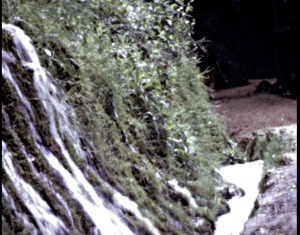
Un recorrido por el Monasterio de Piedra y por las cascadas cercanas retratado mediante un juego de música y agua que cae por las cascadas.
A tour by the Stone Monastery and the nearby waterfalls through a game between music and water falling from the waterfalls.
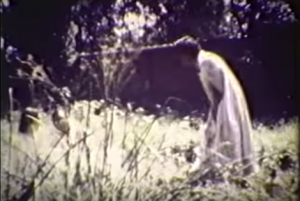
" Ah, verda'? planteaba una extraña combinación entre la militancia política y la contracultural. Jugaba con el ataque a los símbolos del orden nacional y estatal (la bomba en el Monumento a la Revolución y en el PRI, los judiciales persecutores), la crítica a la sociedad de consumo representada por la huida de la pareja de jóvenes entre los espectaculares, la liberación sexual (la combi zarandeada porque dentro hacen el amor, o la urgente calentura de los monjes una vez que han probado el LSD y cruzado las puertas de la percepción), y la representación de la fantasía jipiteca de que el mundo sería más alivianado si todos probaran las drogas duras" (Vázquez Mantecón, 2012).
" Ah, verda' [Ah, right?] was a strange combination between political and countercultural militancy. It played with the attack to symbols of state and national order (a bomb in the Monument to the Revolution and in PRI offices [Revolutionary Institutional Party], the chasing police men), a critique to a consumer society represented by a young couple running away in between billboards, the sexual liberation (a truck shaken because someone is making love inside, the sex desire of monks once they have tried LSD and crossed the gates of perception), and the representation of the mexican hippies' fantasy in which the world would be cooler if everyone tried hard drugs" (Vázquez Mantecón, 2012).
"Ah! Wilderness: The stark beauty of remote mountain and plain areas, as yet untouched by the unrelenting surge of modern civilization, has been caught by Charles Benjamin's camera and Kodachrome film. Adapted from the book Stone Dust, by Frank Ernest Hill, Benjamin's film opens with scenes of mountain peaks and passes in winter- peaks mantled in snow, and trickling brooks that somehow have evaded the wintry grip of Jack Frost. The picture progresses in a like manner through Spring, Summer and Autumn, rendering a pictorial account of the ever-changing seasons in one of the few remaining wilderness areas of America. The picture discloses skillful camera handling as well as a talent for building interesting continuity through artful editing and titling." American Cinematographer, May 1951, 189
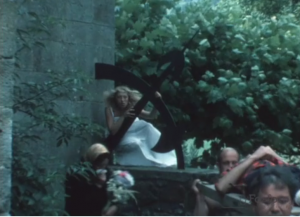
El filme comienza con un hombre vagando por el campo. Encuentra a una mujer vestida de blanco y comienzan a besarse, hasta que eventualmente caen sobre el pasto. El hombre lleva a la mujer vestida de blanco a conocer a una mujer mayor que la rechaza y la hace huir. El hombre va en su búsqueda y nota que ella tiene patas de pato, él cae al suelo y muera mientras ella coloca un pequeño costal café cerca de su pecho. La película muestra después a un grupo de hombres cargando su cuerpo hacia su ceremonia fúnebre mientras la mujer mayor llora detrás de la procesión y la mujer de blanco observa escondida en una esquina. Cuando el cuerpo es dejado solo, la mujer de blanco se aproxima para tomar el costal café y desaparece.
The film begins with a man wandering in the country. He finds a woman dressed in white and they begin to kiss, eventually falling on the grass. The man takes the woman dressed in white to meet an older woman who rejects her and makes her leave. He goes looking for the woman in white and sees that she has duck legs, he falls and dies while she places a small brown sack by his chest. The film then shows men carrying his body to his burial while the older woman cries behind the funeral procession and the woman in white watches hiding in a corner. When the body is left alone, the woman in white approaches him and takes the brown sack back and leaves.
"Ahead, Inc. depicts the movement in Flint, Michigan, to assist the handicapped in earning their own way in the world" PSA Journal, Sept. 1966, 34.
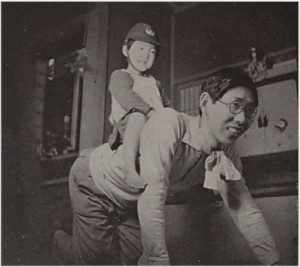
"Mimae edited together a sequence of her husband and their small son at home (the boy pretending to be riding his war-horse father), with a scene capturing a crowd of people offering silent prayers, which Mimae shot on location in Ginza. This topic and narrative structure demonstrate how her film visualized the social and political sentiments in a way to promote the war efforts, even though the film itself also appeared as a family film." - Noriko Morisue, "Filming the Everyday: History, Theory, and Aesthetics of Amateur Cinema in Interwar and Wartime Japan" (Yale University: PhD Dissertation, 2020): 203.
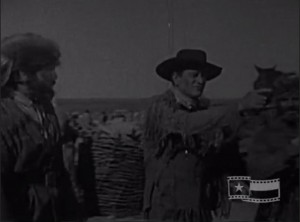
"“The Air Evac Story, or: Better You Should Walk?” is a humorous amateur film that spoofs the United States Air Force’s medical evacuation services. Starring members of the 14th Aeromedical Transport Squadron, the film begins at squadron headquarters at Brooks Air Force Base in San Antonio. It then follows crew members on their daily mission to transport patients, making stops in El Paso and Brackettville. While the voiceover narration commends the squadron for their professionalism, their comedic actions throughout the film tell a different story. Of particular note is a cameo by none other than John Wayne. Charles F. Curtis, a cinematography engineer with the Air Force, made the spoof with his crew around the same time that Wayne was in Brackettville shooting The Alamo (1960). Curtis helped design a working camera track system for the blockbuster film, and Wayne agreed to make a brief appearance in the Air Evac Story as thanks" Texas Archive of the Moving Image.
"Activity at Croydon Airport in 1936, with focus on Imperial Airways' international flights. Original film was 33 minutes in length. This is possibly the only surviving representative of the very first Ten Best competition organised by 'Amateur Cine World' magazine." (EAFA Database)
Total Pages: 299